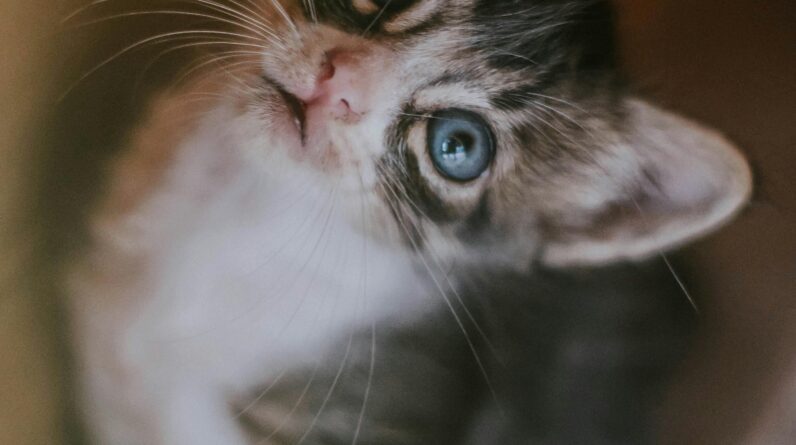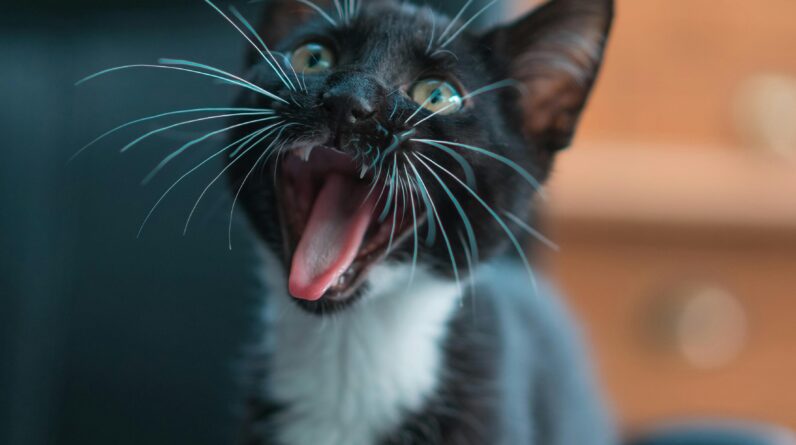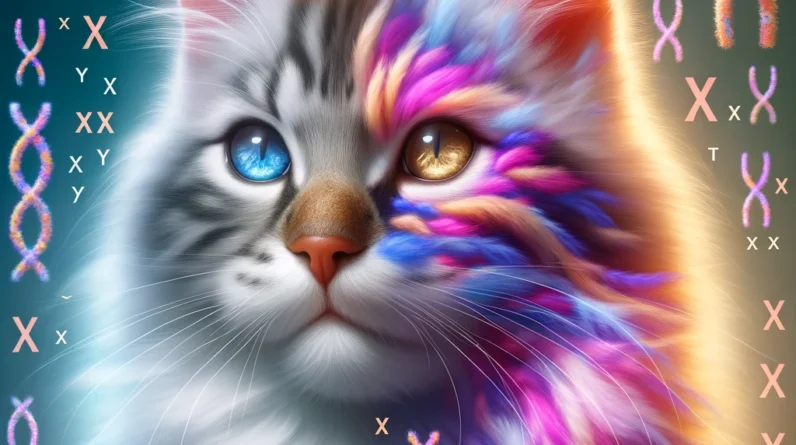
The Curious Case of Ginger Cats: Unraveling the Mystery of Their Gender
Have you ever noticed that most ginger cats are male and wondered why?
This fascinating phenomenon piques the curiosity of cat lovers and casual observers alike.
Let’s dive into the simple science behind this curious fact.
Key Takeaways:
- Genetic Coin Toss: Ginger color in cats is determined by a gene on the X chromosome.
- Simple for Males: Male cats need only one ginger gene to be ginger, as they have only one X chromosome.
- Double Challenge for Females: Female cats require two ginger genes (one on each X chromosome) to be ginger, making them less common.
- Colorful Alternatives: With only one ginger gene, female cats often become tortoiseshell or calico, not plain ginger.
- Rarity of Female Gingers: Ginger female cats are rare treasures in the cat world, due to this unique genetic requirement.
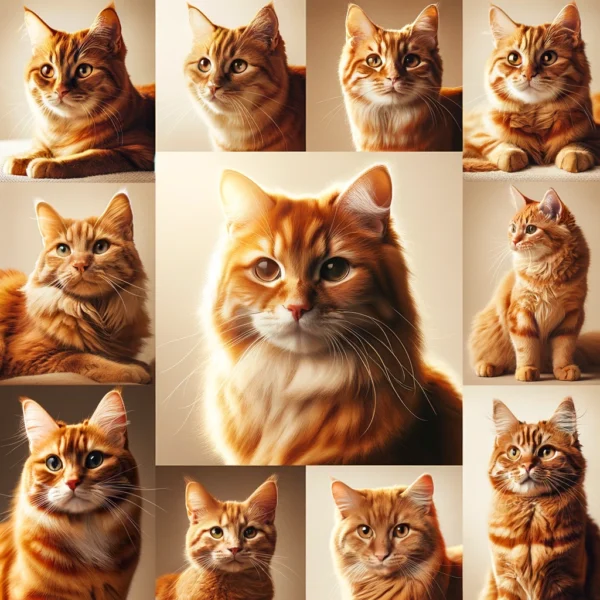

The Basics of Cat Genetics
To understand why most ginger cats are males, we should start with a brief overview of cat genetics.
The color of a cat’s fur, including the ginger color, is a result of its genetic makeup.
The key gene that decides if a cat will be ginger is located on the X chromosome.
Now, let’s talk about chromosomes.
Chromosomes are like tiny packages of genes in each cell.
Cats, just like humans, have two sex chromosomes in each cell.
Female cats have two X chromosomes (XX), while male cats have one X and one Y chromosome (XY).
Since the ginger color gene is on the X chromosome, here’s how it works: a male cat only has one X chromosome.
If this X chromosome carries the ginger gene, the cat will be ginger. It’s a straightforward 50/50 chance, like flipping a coin.
On the other hand, female cats have two X chromosomes.
To be ginger, both of these X chromosomes need to carry the ginger gene.
This is less likely to happen compared to just one X chromosome.
It’s like flipping a coin twice and needing heads both times.
If a female cat has the ginger gene on only one X chromosome and a different color gene on the other, she won’t be purely ginger.
Instead, she might be tortoiseshell or calico, which are mixtures of colors.
So, male cats need just one ginger gene to be ginger, which is why most ginger cats are male.
Female cats need two ginger genes, making ginger females much rarer.
This simple genetic rule explains the surprising gender pattern in these eye-catching feline friends.
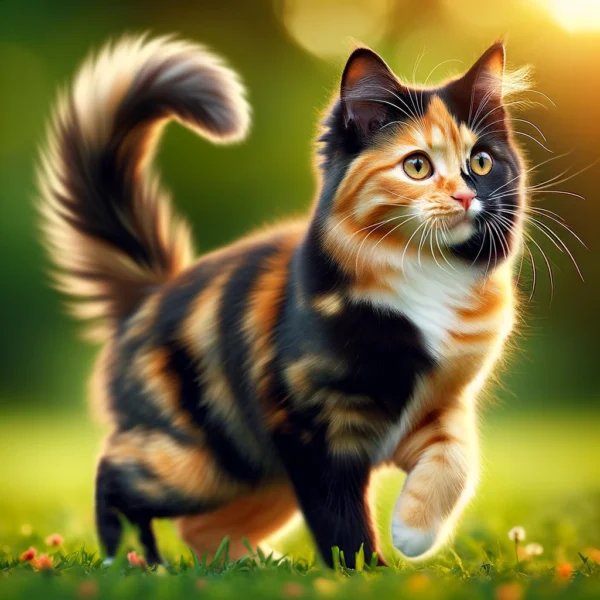

Why Most Ginger Cats are Male
The key point to understand is this: the ginger color in cats is linked to a specific gene on the X chromosome.
Here’s how it works for each gender.
Male Cats and the Ginger Gene
Male cats have only one X chromosome because their genetic makeup is XY (one X and one Y chromosome).
For a male cat to be ginger, his single X chromosome must carry the ginger gene.
It’s a simple scenario, similar to flipping a coin just once.
If the coin shows ‘heads’ (representing the ginger gene), the cat will be ginger.
If it shows ‘tails’ (representing a non-ginger gene), the cat will have a different color.
Female Cats and the Ginger Gene
Female cats, on the other hand, have two X chromosomes (XX).
To be ginger, a female cat needs the ginger gene on both of her X chromosomes.
This is where it gets trickier. Think of it as flipping a coin twice.
The first flip needs to land on ‘heads’ (ginger gene) and so does the second flip.
Both flips must result in ‘heads’ for the cat to be ginger.
If even one flip lands on ‘tails’ (a non-ginger gene), the cat will not be purely ginger but might have a mix of colors, like tortoiseshell or calico.
This difference in genetic makeup between male and female cats is why it’s more common to see ginger males than ginger females.
For males, it’s a single genetic ‘flip’ that decides their color, while females require a double ‘win’ on the genetic ‘coin toss’ to be ginger.
This genetic twist of fate makes ginger female cats a rarer find, adding to their special charm and allure in the world of felines.
So, when you see a ginger cat, remember the fascinating genetic lottery that determined its vibrant hue, especially if it’s a female ginger cat, a less common result of this genetic ‘coin toss’!


Female Ginger Cats: A Rarity
Female cats face a unique situation when it comes to being ginger.
They have two X chromosomes, and each chromosome needs to carry the ginger gene for the cat to be fully ginger. Here’s a closer look.
The Two-Gene Requirement
Imagine each X chromosome as a puzzle piece.
For a female cat to be ginger, both pieces need to perfectly match with the ginger gene.
This is unlike male cats, who only have one X chromosome and thus need just one ginger gene.
The Possibility of Mixed Genes
If a female cat has the ginger gene on one X chromosome but a different gene on the other, she won’t be purely ginger.
This combination of genes leads to a blend of colors.
The Tortoiseshell and Calico Outcome
When a female cat has one ginger gene and one non-ginger gene, she often becomes tortoiseshell or calico.
Tortoiseshell cats have a mix of orange and black fur, while calicos also include white.
These patterns are beautiful and unique, but they’re not the solid ginger color.
Rarity of Female Ginger Cats
Because it’s less likely for a female cat to receive two ginger genes, one from each parent, ginger females are relatively rare.
Finding a female ginger cat is like finding a gem, due to this genetic play of chance.
In essence, the world of cat colors is a fascinating display of genetics.
The rarity of female ginger cats adds to the intrigue and charm of these feline companions, making them special among their furry peers.
Just like uncovering a hidden treasure, spotting a female ginger cat is a delightful surprise, a result of the intriguing lottery of cat genetics.
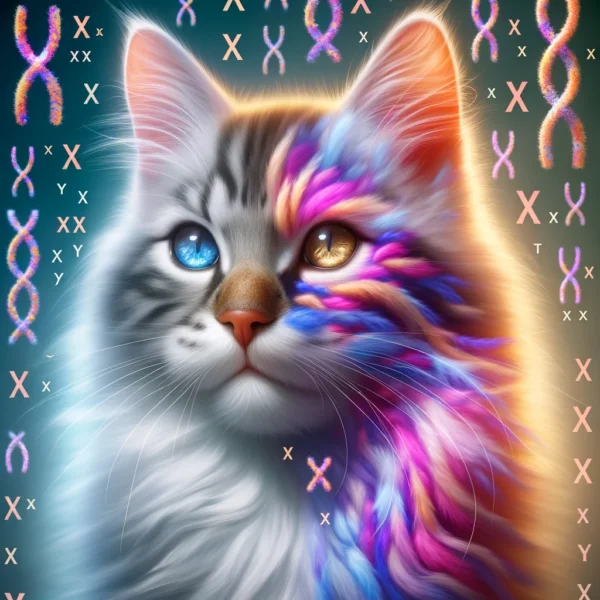

In conclusion, the mystery of why most ginger cats are male boils down to a fascinating quirk of genetics.
Next time you see a ginger cat, you’ll know the science behind its vibrant coat, and if it’s a female, you’ll appreciate her rarity even more!
Understanding these genetic nuances not only satisfies our curiosity but also deepens our appreciation for the diversity of nature.
Just like the complex flavors in a glass of fine wine, the world of genetics holds intricate and delightful surprises waiting to be discovered.
FAQs:
Q1: Why are ginger cats mostly male?
A: Ginger cats are mostly male because the gene for ginger fur is on the X chromosome.
Males (XY) need only one ginger gene to be ginger, while females (XX) need two.
Q2: Can female cats be ginger?
A: Yes, female cats can be ginger, but it’s less common.
They need two copies of the ginger gene, one on each X chromosome.
Q3: What happens if a female cat has only one ginger gene?
A: If a female cat has only one ginger gene, she usually becomes tortoiseshell or calico, displaying a mix of orange, black, and sometimes white fur.
Q4: Are ginger female cats rare?
A: Yes, ginger female cats are rare because they require two copies of the ginger gene, which is less likely than the single copy needed by males.
Q5: What determines a cat’s fur color?
A: A cat’s fur color is determined by various genes, with the gene for ginger color located on the X chromosome.
Q6: Can a ginger cat have non-ginger kittens?
A: Yes, ginger cats can have non-ginger kittens depending on their genetic makeup and the genetics of the other parent cat.
Q7: Does the ginger gene affect a cat’s health?
A: The ginger gene is solely responsible for fur color and does not directly affect a cat’s health.
However, all cats, regardless of color, should have regular veterinary check-ups.
Q8: Is the ginger gene dominant or recessive?
A: The ginger gene is neither completely dominant nor recessive.
It’s a bit more complex due to its location on the X chromosome and how it interacts with other genes.





